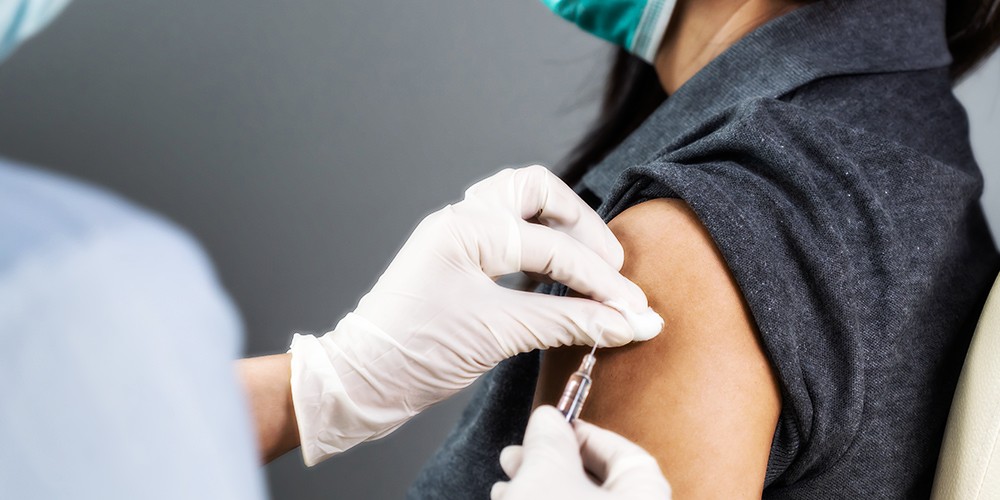(Natural News)—A recent study published in ScienceDirect revealed that nearly two-thirds of Wuhan coronavirus (COVID-19) vaccine recipients suffer from health complications one year after getting vaccinated.
The study, funded by the Indian Council of Medical Research in New Delhi and conducted between September 2021 and May 2023, focused on potential post-COVID-19 vaccination syndrome (PCVS) and its impact on the quality of life (QoL) among Indian adults aged 18 and above who received either Bharat Biotech’s COVAXIN or the AstraZeneca COVID-19 vaccines. (Related: Australian actress sues AstraZeneca for life-threatening vaccine injury, but continues to ADVOCATE for other COVID-19 “vaccines.”)
According to study authors Yogendra Shrestha and Rajesh Venkataraman from the Department of Pharmacy Practice, Sri Adichunchanagiri College of Pharmacy, 52.8 percent of the vaccine recipients experienced at least one PCVS a month after their first vaccination. Shockingly, this number increased to 64.6 percent at the 12-month mark. Overall, the PCVS was higher among vaccinated individuals with AstraZeneca (65.59 percent) compared to COVAXIN (59.4 percent).
Notably, individuals who opted for booster shots revealed even higher rates of PCVS, with over 80 percent reporting complications. This contrasts sharply with the unvaccinated group, where only 50 percent reported a similar syndrome. In other words, the occurrence of PCVS decreases over time but increases after booster shots. The QoL improves over time but declines after boosters.
Furthermore, the authors noted that discussions about the impact of immunization on people with long-term COVID have led to varying opinions.
“Some evidence indicates a change in, an improvement in, a continuation of, or even a worsening of long-term COVID-19 symptoms following vaccination. The ratio of change in antibody titers was noticeably larger in the group of people whose illnesses became worse.”
CDC still recommends COVID-19 vaccines despite evidence of adverse effects from several studies
This controversial study adds to a growing body of research suggesting potential health complications associated with COVID-19 vaccinations.
-
Learn the TRUTH about Gold IRAs and how most precious metals companies play dirty.
A March review, published in the National Library of Medicine, analyzed 81 articles confirming cardiovascular complications in 17,636 individuals who had received an mRNA vaccine. The study reported 284 deaths, with thrombosis being a frequent concern associated with mRNA shots.
Pfizer’s vaccine was linked to thrombosis, while Moderna’s vaccine recipients experienced a higher incidence of stroke. Cardiologist Peter McCullough described the findings as a “cardiovascular safety disaster,” questioning public health agencies for the continuous promotion of these vaccines.
In a Substack post on Nov. 11, McCullough emphasized that 284 well-described deaths due to cardiovascular and thrombotic complications should prompt a global recall of the vaccines. The time between vaccination and the onset of symptoms was reported to be 5.6 days for Moderna and 4.8 days for Pfizer.
Moreover, a preprint study published on medRxiv revealed common chronic symptoms among vaccine recipients, including excessive fatigue, brain fog, numbness, neuropathy and exercise intolerance. At least half of the participants, with a median of 22 symptoms, also reported dizziness, burning sensations, tinnitus, headache, insomnia, palpitations and myalgia.
But despite all these concerns, the Centers for Disease Control and Prevention still recommends the 2023-2024 updated COVID-19 vaccines from Pfizer, Moderna and Novavax, even for children as young as six months old. The agency insists that these vaccinations are necessary to protect against serious illness from COVID-19. However, recent government files revealed that over five million COVID-19 infections in 2021 occurred among vaccinated individuals.
Sound off about this story on the End Medical Tyranny Substack.
Learn more about the dangers of COVID-19 vaccines at Vaccines.news. Watch U.K. Member of Parliament Andrew Bridgen calling for the suspension of mRNA COVID-19 vaccines in the House of Commons.
This video is from the channel The Big Logic channel on Brighteon.com.
More related stories:
- CDC knew COVID vaccines killed 163 children and injured 67,622, but still included the deadly shots in childhood immunization schedule.
- Brazil’s socialist government threatens to WITHHOLD welfare payments to parents who REFUSE TO VACCINATE their children against COVID-19.
- Pfizer and Moderna COVID jabs found to be contaminated with short DNA fragments, making them potentially TUMORIGENIC and GENOTOXIC.
- Study: COVID-19 vaccines linked to increased risk of brain clots and stroke when combined with flu vaccines.
Sources include:
Don’t just survive — THRIVE! Prepper All-Naturals has freeze-dried steaks for long-term storage. Don’t wait for food shortages to get worse. Stock up today. Use promo code “jdr” at checkout for 35% off!




Gee… complications from the clot-shot. Who knew? Oh that’s right… we the UN-VAXXED did and WE TOLD YOU SO ! The vaxxed heckled us, threatened us, called us every name in the book including conspiracy theorists. How’d that work out for you? Not a conspiracy after all was it? Who’s dying and having complications? Not the Pure Bloods!
The vaxxed were dumb enough to follow the rest of the sheep – now they are paying for their stupidity. They should get their affairs in order before the vaccine does exactly what it’s designed to do: KILL YOU.